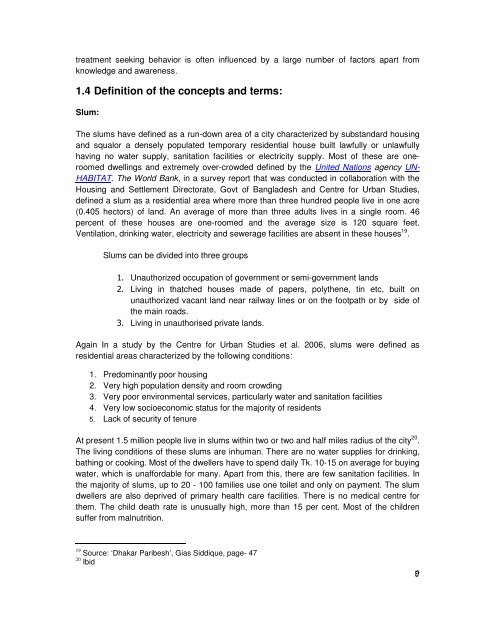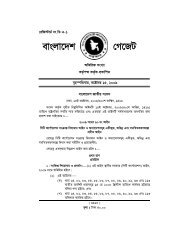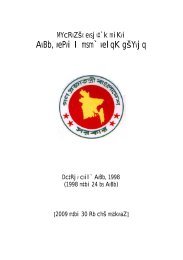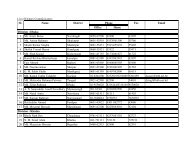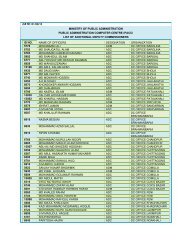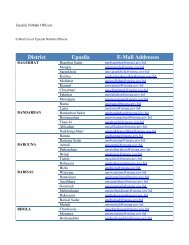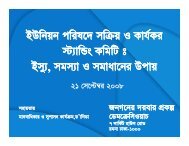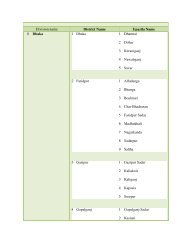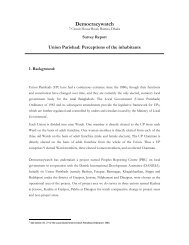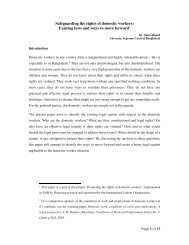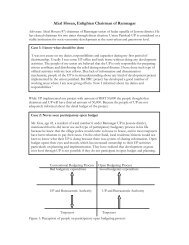Reproductive Decision Making Role among ... - Democracywatch
Reproductive Decision Making Role among ... - Democracywatch
Reproductive Decision Making Role among ... - Democracywatch
- No tags were found...
You also want an ePaper? Increase the reach of your titles
YUMPU automatically turns print PDFs into web optimized ePapers that Google loves.
treatment seeking behavior is often influenced by a large number of factors apart fromknowledge and awareness.1.4 Definition of the concepts and terms:Slum:The slums have defined as a run-down area of a city characterized by substandard housingand squalor a densely populated temporary residential house built lawfully or unlawfullyhaving no water supply, sanitation facilities or electricity supply. Most of these are oneroomeddwellings and extremely over-crowdeddefined by the United Nations agency UN-HABITAT. The World Bank, in a survey report that was conducted in collaboration with theHousing and Settlement Directorate, Govt of Bangladesh and Centre for Urban Studies,defined a slum as a residential area where more than three hundred people live in one acre(0.405 hectors) of land. An average of more than three adults lives in a single room. 46percent of these houses are one-roomed and the average size is 120 square feet.Ventilation, drinking water, electricity and sewerage facilities are absent in these houses 19 .Slums can be divided into three groups Unauthorized occupation of government or semi-government lands Living in thatched houses made of papers, polythene, tin etc, built onunauthorized vacant land near railway lines or on the footpath or by side ofthe main roads. Living in unauthorised private lands.Again In a study by the Centre for Urban Studies et al. 2006, slums were defined asresidential areas characterized by the following conditions:1. Predominantly poor housing2. Very high population density and room crowding3. Very poor environmental services, particularly water and sanitation facilities4. Very low socioeconomic status for the majority of residents5. Lack of security of tenureAt present 1.5 million people live in slums within two or two and half miles radius of the city 20 .The living conditions of these slums are inhuman. There are no water supplies for drinking,bathing or cooking. Most of the dwellers have to spend daily Tk. 10-15 on average for buyingwater, which is unaffordable for many. Apart from this, there are few sanitation facilities. Inthe majority of slums, up to 20 - 100 families use one toilet and only on payment. The slumdwellers are also deprived of primary health care facilities. There is no medical centre forthem. The child death rate is unusually high, more than 15 per cent. Most of the childrensuffer from malnutrition.19 Source: ‘Dhakar Paribesh’, Gias Siddique, page- 4720 Ibid


